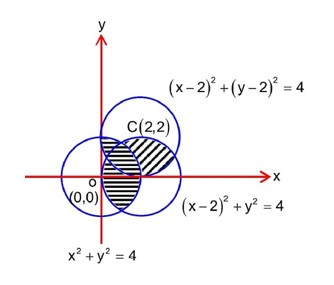Relations and Functions
Get insights from 232 questions on Relations and Functions, answered by students, alumni, and experts. You may also ask and answer any question you like about Relations and Functions
Follow Ask QuestionQuestions
Discussions
Active Users
Followers
New question posted
4 months agoNew question posted
4 months agoNew answer posted
4 months agoContributor-Level 10
number of elements in
(0, 0) (1, 0) (1, 1) (1, -1) (2, 0)
Similarly number of elements in
(2, 0) (2, 2) (1, 1) (2, 1) (3, 1)
Hence number of relation from
->P = 25

New answer posted
4 months agoContributor-Level 10
a0 = 0, a1 = 0
an+2 = 3an+1 – 2an + 1
a25 a23 – 2a25a22 – a23a24 + 4a22a24 =?
a2 = 3a1 – 2a0 + 1
a3 = 3a2 – 2a1 + 1
a4 = 3a3 – 2a2 + 1
a5 = 3a4 – 2a3 + 1
an+2 = 3an+1 – 2an + 1
⇒ an+2 = 2 (a2 + a3 + …. + an + an+1) –2 (a1 + a2 + ….+ an) + n + 1
an+2 = 2an+1 + n + 1
a25 a23 -2a25 a22 -a23 a24 + 4a22 a24
= a25 (a23 – 2a22) -2a24 (a23 – 2a22)
As an+2 = 2an+1 + n + 1
⇒ an+2 – 2an+1 = n + 1
⇒ an+1 -2an = n
⇒ 24 * 22 = 528
New answer posted
4 months agoContributor-Level 10
y = 2x
3x2 – 5x + 2 = 0
=
3x2 – 7x + 3 = 0
x =
3x2 + 7x – 2 = 1
3x2 – 7x + 1 = 0
x =
I =
New answer posted
4 months agoContributor-Level 10
For R1, take a = 1, b = 0, c = -1
but AC < 0
So R1 is not an equivalence relation.
For R2, it will not be symmetric.
So R2 is also not an equivalence relation.
New answer posted
4 months agoContributor-Level 10
A = {1, 2, 3, ……, 9}
for set B,
total number of such function = 2 * 1 * 1 * 1 * 2 * 3 * 4 * 5 * 6 = 2 * 6! = 1440
Taking an Exam? Selecting a College?
Get authentic answers from experts, students and alumni that you won't find anywhere else
Sign Up on ShikshaOn Shiksha, get access to
- 66k Colleges
- 1.2k Exams
- 680k Reviews
- 1800k Answers
